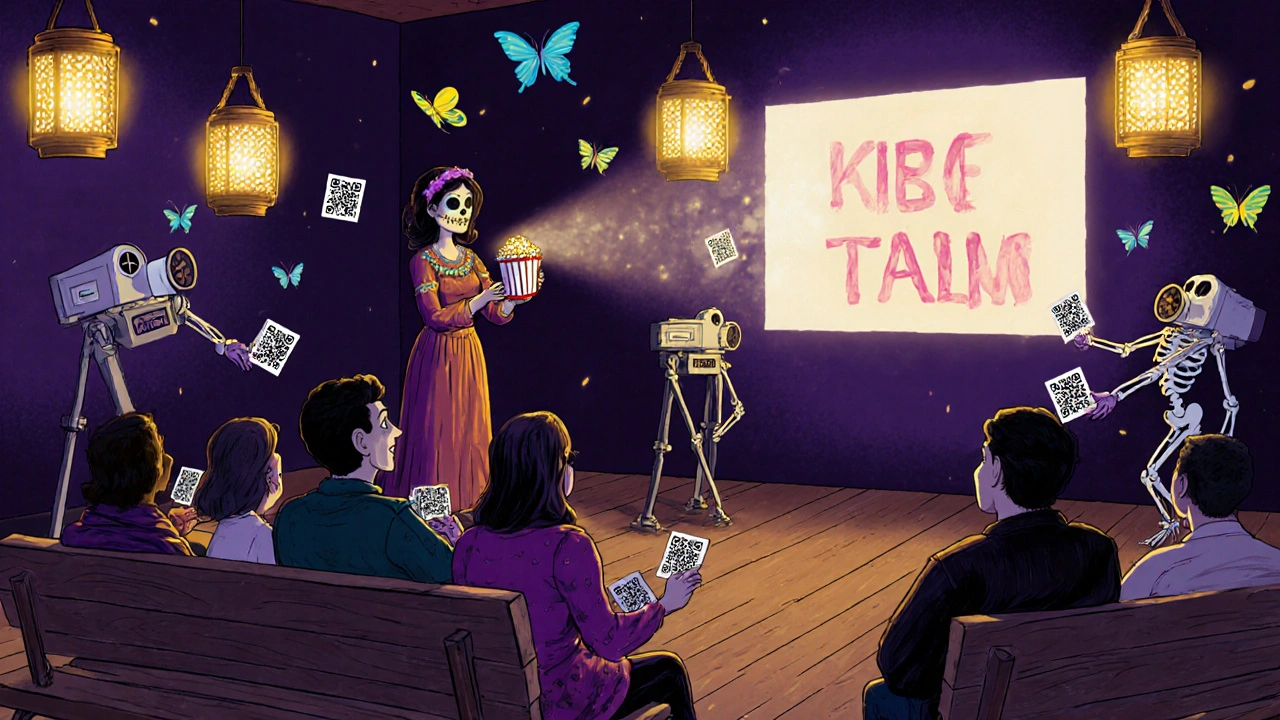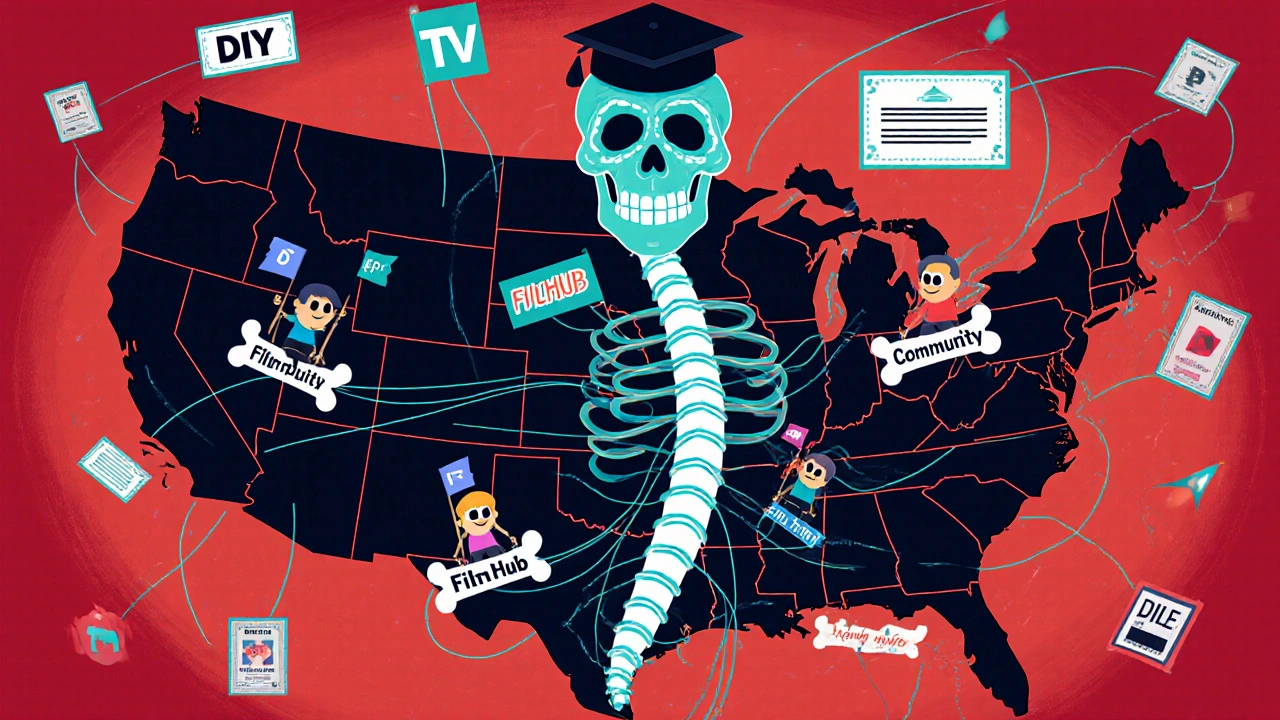Most independent filmmakers never see their films in theaters. Not because they’re not good enough, but because the old system doesn’t work for them anymore. Traditional distributors take 30% to 50% of revenue-plus fees-and still rarely give your film real visibility. By 2025, the smartest filmmakers are skipping the middlemen entirely. They’re uploading their films themselves, setting their own prices, and talking directly to the people who care. This isn’t a last resort. It’s the new normal.
Why DIY Distribution Is No Longer Just a Backup Plan
Five years ago, DIY film distribution meant posting your movie on YouTube and hoping for the best. Today, it’s a full-blown business strategy. Platforms like Vimeo On Demand, Amazon Prime Direct, and YouTube allow filmmakers to publish their work without approval from gatekeepers. You don’t need a sales agent. You don’t need a festival win. You just need a finished film and the will to reach your audience.
The numbers tell the story. In 2020, only 42% of micro-budget films (under $500,000) used DIY or hybrid distribution. By 2025, that jumped to 68%. Why? Because filmmakers realized they were losing money just to get ignored. A distributor might promise “wide release,” but if your film ends up buried under 200 others on a streaming service, it’s a loss. With DIY, you control where it goes, who sees it, and how much you earn.
Take the case of a documentary about deepfake abuse. The filmmakers didn’t wait for a distributor. They hosted a “pay-what-you-can” online summit, partnered with advocacy groups, and turned the film into a conversation starter. It got Emmy nominations. It went viral. And they kept 90% of every dollar earned. That’s the power of owning your release.
How Much Money Can You Actually Keep?
Here’s the hard truth: traditional distribution eats your profits. If you sign a deal where you get 50% of revenue, that’s before fees. Then there’s aggregator fees, platform fees, international handling charges, and sometimes even marketing fees you didn’t know you were paying. By the time everything’s deducted, you’re lucky to see 30%.
With DIY, it’s different. On Vimeo On Demand, you keep 90% after a $0.99 transaction fee. On Amazon Prime Direct, you keep 80%. YouTube’s ad revenue model pays $0.50 to $3.00 per thousand views. FAST channels like Pluto TV and Samsung TV Plus give you 40% to 60% of ad revenue. You’re not getting rich overnight, but you’re not being bled dry either.
Compare that to the old way: a distributor takes 50%, then an aggregator takes another 20%, then a platform takes 15%. That’s 72% gone before you see a cent. And you still don’t know if your film even made it onto a single platform.
DIY doesn’t mean you make more money every time. But it means you make more money on your terms. And for most indie filmmakers, that’s worth more than a bigger upfront check from someone who doesn’t care about your film.
Technical Requirements: Don’t Get Rejected for a File Format
Here’s where most DIY filmmakers stumble. They think if they can edit a movie, they can upload it. But platforms have strict rules. Get it wrong, and your release gets delayed by weeks.
- Vimeo On Demand requires H.264 MP4 files, 1080p minimum, 5.1 surround sound support, and subtitles in SRT format with exact timing. No exceptions.
- Amazon Prime Direct demands IMF (Interoperable Master Format) packages. That’s not just a video file-it’s a folder with multiple audio tracks, captions, and metadata files. If one piece is missing, they reject it.
- YouTube is more forgiving, but if you want to monetize, you need closed captions in English and at least one language you’re targeting.
Most indie films need 2 to 4 weeks of post-production tweaks just to meet these specs. That’s not marketing. That’s tech prep. Hire a post house if you can’t do it yourself. It’s cheaper than a 3-week delay.
Don’t forget legal paperwork either. Even for digital-only releases, you need signed releases from everyone on camera, music licenses, and proof of errors and omissions insurance. Entertainment Partners says you can’t skip this-even if you’re not showing in theaters. One lawsuit can kill your entire release.

Marketing: It’s Not About Ads, It’s About Community
DIY distribution isn’t about buying Facebook ads. It’s about building relationships.
Start 3 to 6 months before your release. Build an email list. Post behind-the-scenes clips. Answer comments. Go live on Instagram and answer questions about your film. Don’t just say “Watch my movie.” Say “This film changed how I saw [topic]. I want to hear what it does for you.”
Some of the most successful campaigns use “impact partners.” If your film is about climate change, partner with environmental nonprofits. If it’s about mental health, work with therapy groups. They’ll promote it to their audiences. You get exposure. They get content. Everyone wins.
One filmmaker released a film about rural healthcare in New Zealand. She didn’t spend a dollar on ads. She reached out to 20 local community centers, offered free screening kits, and asked them to host Q&As. She got 85 screenings in 11 months. That’s not luck. That’s strategy.
And don’t ignore reviews. Respond to them. Even the bad ones. People notice when a filmmaker cares. That builds loyalty. And loyalty turns one-time viewers into lifelong supporters.
Hybrid Models: The Best of Both Worlds
DIY doesn’t mean you have to do everything alone. Many filmmakers use hybrid models-mixing direct distribution with smart partnerships.
Aggregators like FilmHub and Quiver are a middle ground. They handle platform uploads, currency conversion, and tax reporting for $500 to $2,500 per film. In exchange, they take 15% to 30% of revenue. That’s still better than traditional distributors, and you get access to 20+ platforms at once-including FAST channels in Europe, Asia, and Latin America.
Or go the theatrical route. A filmmaker in Auckland recently booked 12 indie cinemas across New Zealand and Australia. She didn’t need a distributor. She called the theaters herself, sent them a DCP (digital cinema package), and split ticket revenue 50/50. She made more in three weeks than she would have from a streaming deal.
Hybrid doesn’t mean complicated. It means flexible. You can release on Vimeo, run a few theater shows, and then drop the film on Pluto TV-all in the same month.

Global Distribution: The Hidden Challenge
There are over 100 FAST channels worldwide now. Pluto TV has 12 movie channels. Samsung TV Plus has 17. Rakuten has 30. But each one has different rules.
Europe requires GDPR-compliant data handling. Japan has strict content censorship. India demands regional language subtitles. If you’re releasing globally without a distributor, you’re responsible for all of it.
That’s why many filmmakers start small. Pick one or two key markets. Learn their rules. Build traction there. Then expand. Don’t try to be everywhere at once. You’ll burn out-and your film will get lost in the noise.
Also, niche films (like documentaries on obscure topics) still struggle on FAST channels. They’re not prioritized. So if your film is for a narrow audience, focus on direct sales and community screenings. That’s where the real fans are.
What You Need to Do Before You Hit Upload
Here’s a simple checklist to avoid the most common DIY mistakes:
- Finish your film at least 8 weeks before your planned release date.
- Convert your file to meet platform specs (Vimeo, Amazon, YouTube).
- Get signed releases for everyone on camera and music licenses.
- Prepare closed captions and subtitles in at least two languages.
- Build your email list and social media audience 3 months ahead.
- Plan your launch campaign: who will host screenings? Who will review it? Who will share it?
- Set your price: $3.99 for rentals, $9.99 for purchases, or “pay what you can” for impact films.
- Choose your platforms: start with 1 or 2, not 10.
- Allocate 15% to 20% of your budget to distribution and marketing.
- Track everything: downloads, views, revenue, audience location.
Don’t skip the tracking. If you don’t know where your viewers are coming from, you can’t improve your next release.
Is DIY Distribution Right for You?
It’s not for everyone. If you hate marketing, hate tech, and want someone else to handle everything-stick with a distributor. But know what you’re giving up.
DIY distribution is for filmmakers who want control. Who want to talk to their audience. Who want to build a career, not just a film. It’s for those who understand that distribution isn’t the end of the process-it’s the beginning of the conversation.
The most successful indie filmmakers in 2025 aren’t the ones with the biggest budgets. They’re the ones who treated their release like their production: intentional, creative, and deeply personal.
Can I distribute my film on multiple platforms at once?
Yes, and you should. Most successful DIY filmmakers release on 2 to 4 platforms simultaneously-like Vimeo On Demand, Amazon Prime Direct, and YouTube. Just make sure your contract allows it. Some aggregators restrict exclusivity, so read the fine print. Avoid platforms that demand exclusive rights unless you’re getting a big upfront payment.
Do I need a DCP for digital-only releases?
No, you don’t need a DCP for online distribution. DCPs are for theaters. But if you plan to do even one screening in a cinema-like a local arthouse-you’ll need one. It’s expensive ($1,000-$2,500), so only make one if you’re serious about theatrical. For digital, MP4 or IMF files are all you need.
How long does it take to see revenue from DIY distribution?
It varies. On Vimeo or Amazon, you’ll see sales within days if you promote well. On ad-supported platforms like YouTube or FAST channels, it can take 30 to 90 days to accumulate enough views for payment. Most platforms pay monthly, but payouts are delayed by 30 to 60 days. So if you launch in January, you might not see your first check until March.
What’s the biggest mistake DIY filmmakers make?
Waiting until the last minute to plan distribution. Many think, “I’ll figure out marketing after the film is done.” That’s a recipe for silence. The best campaigns start 6 months before release. Build your audience before you have a film. Talk about your process. Share your struggles. Let people feel like they’re part of the journey. That’s how you turn viewers into fans.
Are aggregators worth it for beginners?
Yes-if you’re overwhelmed by tech or international rules. Aggregators like FilmHub and Quiver handle file formatting, platform uploads, and tax reporting. They’re not free, but they save you 50+ hours of work. For a first-time filmmaker, it’s worth the 15% to 30% cut. Once you’ve done it once, you can go fully DIY next time.
If you’ve made a film, you’ve already done the hardest part. Now it’s time to make sure it’s seen. The tools are here. The audiences are waiting. You just have to reach out.


